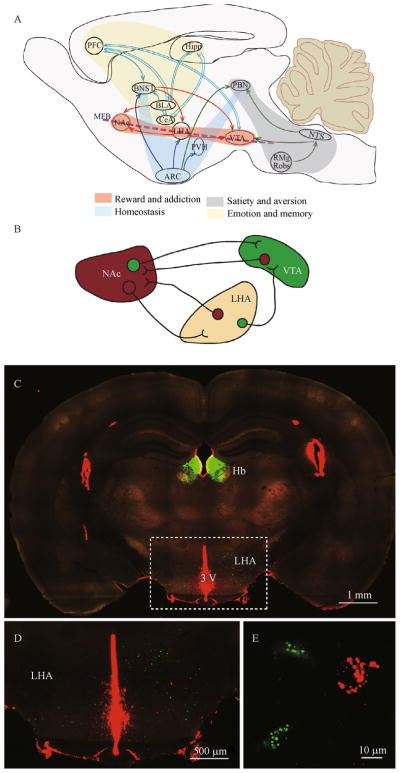Figure 1.
Neural circuits regulate feeding behaviors. (A) Homeostatic feeding is mainly regulated by hypothalamic regions receiving input from the arcuate nucleus (ARC) including paraventricular nucleus of the hypothalamus (PVH). The neural circuit for reward/addiction involves the mesolimbic DA system, including the ventral tegmental area (VTA) and the nucleus accumbens (NAc). The lateral hypothalamic area (LHA) relates homeostatic feeding to reward by directly synapsing on neurons in the VTA and NAc. Brain regions in charge of emotion and memory also modulate feeding behavior, such as the prefrontal cortex (PFC), the hippocampus (Hipp) and the amygdala nuclei including the basal lateral amygdala (BLA), the central amygdala (CeA) and the bed nucleus of stria terminalis (BNST). Nucleus tractus solitarius (NTS) in the hindbrain directly receives inputs from gastrointestinal structures, and communicates the peripheral signals to the parabrachial nucleus (PBN) to regulate satiety and aversion. The NTS also receives anorexigenic signals from the serotonergic neurons in the dorsal raphe. (B) A simplified diagram of LHA-mesolimbic interactions. (C) Retrograde tracing showing LHA neurons project to the NAc (Red) and VTA (Green). Red and green fluorescent beads were injected to the NAc and VTA, respectively. Hb: Habenula.

